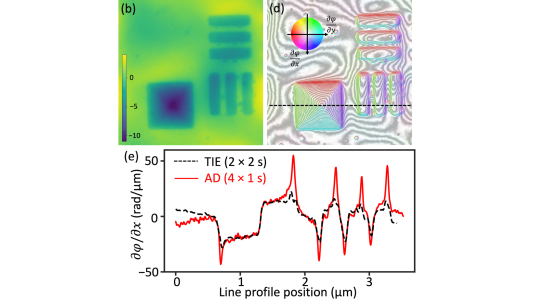
Scientific Achievement
High accuracy high spatial resolution functional imaging of magnetic domains and retrieval of microscope parameters were achieved in Lorentz transmission electron microscopy using a new method based on automatic differentiation (AD).
Significance and Impact
This approach for phase retrieval and functional imaging will enable insights into behavior of nanoscale magnetic spin textures under low-dose and in-situ conditions.
Research Details
- The new method maintains high spatial resolution and is robust against noise at high defocus conditions needed for imaging weak magnetic and electric fields.
- Phase retrieval using simulated and experimental images was demonstrated. The method also retrieves experimental electron-optical parameters which is not possible using existing methods.
Work was performed in part at CNM.
Argonne National Laboratory seeks solutions to pressing national problems in science and technology. The nation’s first national laboratory, Argonne conducts leading-edge basic and applied scientific research in virtually every scientific discipline. Argonne researchers work closely with researchers from hundreds of companies, universities, and federal, state and municipal agencies to help them solve their specific problems, advance America’s scientific leadership and prepare the nation for a better future. With employees from more than 60 nations, Argonne is managed by UChicago Argonne, LLC for the U.S. Department of Energy’s Office of Science.
The U.S. Department of Energy’s Office of Science is the single largest supporter of basic research in the physical sciences in the United States and is working to address some of the most pressing challenges of our time. For more information, visit https://energy.gov/science.